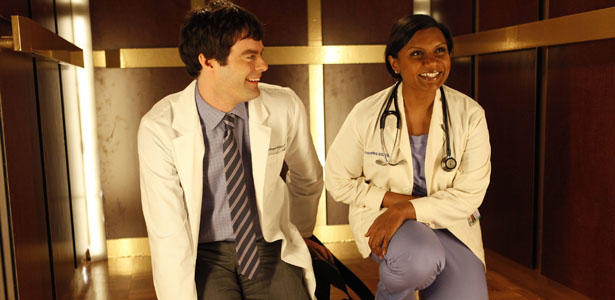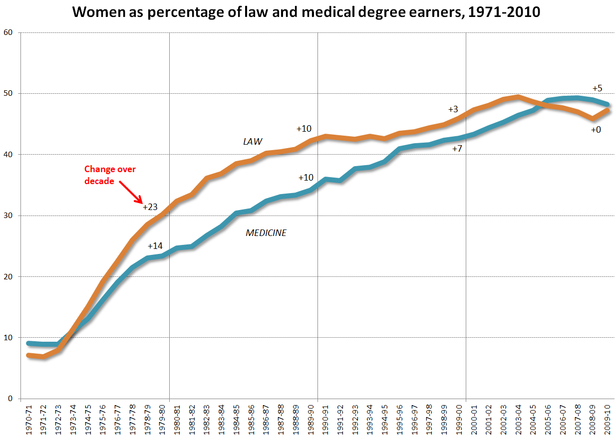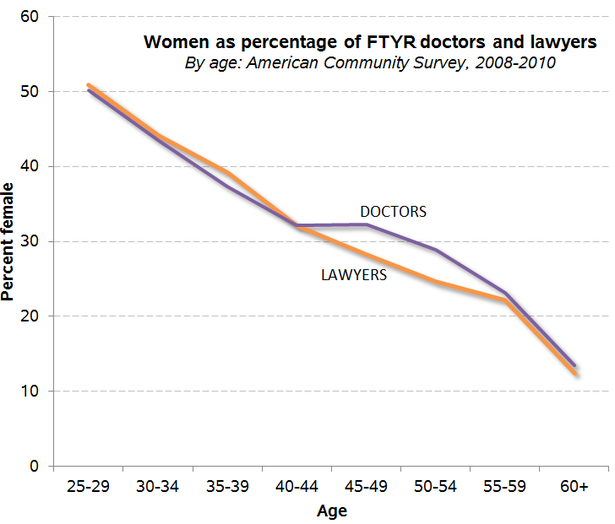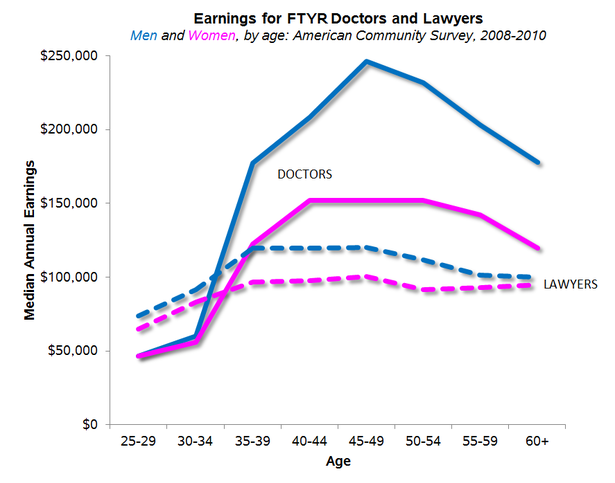More Women Are Doctors and Lawyers Than Ever—but Progress Is Stalling
Women make less money than men in these fields—and are more likely to drop out.

In the Wall Street Journal last week, Josh Mitchell reported that "Women account for a third of the nation's lawyers and doctors, a major shift from a generation ago." The report was triggered by a new analysis of occupations from the Census Bureau, which showed women increased their share of doctor and lawyer by four percent and six percent, respectively, from a decade earlier.
These professional advances mark "very significant progress," according to feminist economist Heidi Hartmann, and I don't disagree. Still, when I spoke to Mitchell I suggested he consider a glass-half-empty perspective, which somehow ended up on the cutting-room floor.
My question is, will progress continue? It doesn't look good. I happen to be a demographer, but you don't need to be one to see that progress for women in these fields is stalling.
First, look at the degrees earned. This figure uses statistics from the Department of Education and breaks the gender trend in law and medical degrees up by decades. Both trends show slowing progress—a smaller increase in women's representation each decade—and both peaked (for now) at just under 50 percent female.
If half of new doctors and lawyers are women, eventually it should be possible to have professions that are gender-balanced. But don't hold your breath.
I looked at today's doctors and lawyers using the 2008-2010 American Community Survey (you can get the data here). Here is the representation of women among full-time and year-round working doctors and lawyers by age. Half of the youngest doctors and lawyers are women, while only one in eight of the oldest are. So as they all age, equal representation should be on the way.
But women are much more likely to drop out of these professions (and others). Among early-career professionals—people ages 25 to 44—who list their most recent jobs as doctor or lawyer, you can see that women are much more likely to be out of the labor force:
With the kind of dropout rates that produce these disparities, we would need much more than 50 percent female in the graduating classes to reach equal representation in these professions.
In Mitchell's report, the economist Claudia Goldin, who has recently investigated women's success as pharmacists, argues that the corporatization of medicine has helped women by introducing the concept of work-family balance, and reducing the gender earnings gap—all changes that helped women in pharmacies as well. But I don't see the evidence that such practices have yet changed the medical industry enough to reduce the gender differences in drop-out rates. And the research evidence shows that explicit diversity policies—with teeth—often are necessary to break the logjam.
And Mitchell's story did not mention any efforts to reduce the segregation of men and women—especially in medicine—into different specialties. That segregation is a big part of what drives the earnings gap among doctors and lawyers. Here are the median earnings by age for doctors and lawyers, from the same source:
At the peak of that curve—ages 45 to 50—female doctors are earning just 62 percent of men's median earnings. As they make their decisions about whether to enter the field, and how to specialize, and how to handle their family demands and opportunities, these disparities in representation and rewards come into play. The decisions men and women in these professions make should never be seen as free choices unconstrained or unaffected by the institutional environment.



